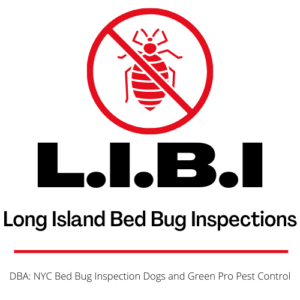Bed bugs have increasingly become a nationwide epidemic over the last few decades. Once considered a thing of the past, these parasitic bloodsuckers have returned with a vengeance and are now one of the most invasive pests facing American families.
If you’ve ever had the misfortune of experiencing a full-scale bed bug invasion you’ll know just how nightmarish the situation can become. With little or no warning you wake up one morning to find yourself covered in raised welts or red rashes – the telltale signs of a hungry bed bug.
Bed Bug Bites
Bed bugs are parasitic insects that feed on the blood of mammals. Humans are their preferred source of sustenance, and they will happily jump at the chance to feed on an unsuspecting host. Their bites typically result in an allergic reaction in the host, causing them to develop a noticeable rash or series of raised welts. Depending on the severity of the reaction.
Bed bugs tend to feed at night, though they have been know to break this pattern given the right environment and a sleeping or otherwise inactive host. In most cases a feeding bed bug with attack their host a number of times during a feeding, biting the host multiple times and extracting the blood on which the survive and thrive.
Bed bugs can feed up to three times a night, leaving a telltale zig-zag pattern of bites on the victim. There are some important factors to consider when we talk about bed bug feeding routines, and it helps to understand those factors better when dealing with a bed bug infestation in your home.
Availability of Food
The first factor to consider is the availability of food. In extreme circumstances a bed bug can actually survive without feeding for up to 400 days. That allows them to play the long game, waiting patiently for a suitable host and bed bug friendly environment.
Generally speaking, however, the average bed bug needs to feed approximately once every seven days or so. Females, given the right environmental conditions, may feed as often as every two days. This is especially true if the females are entering into a reproductive cycle.
The Larger the Population the Bigger the Feeding Frenzy
It is important to remember that bed bugs rarely appear in isolation. If you see one there is bound to be a larger colony within the home. While the feeding habits of one or two bed bugs may seem fairly insignificant the scenario becomes much more troubling when we consider larger populations of these parasites.
As a bed bug colony grows each of the members must feed to a regular schedule and they will all have to feed at different times. This creates something of a perfect feeding storm, and people living in highly infested buildings often wake up to find themselves covered in bed bug bites. There could easily be hundreds, if not thousands, of hungry bed bugs feeding on one host. As the bed bug population increases so will the number of bites inflicted on the hosts.
Living Conditions
The second factor to consider is the environment itself. The conditions within the environment will directly impact the number of times a bed bugs feeds and by extension the number of bed bug bites one might experience.
For example, bed bugs thrive in moderate temperatures. A moderate indoor temperature of say 78° Fahrenheit is optimal, and at this temperature bed bugs will bite and feed to a regular schedule. In agreeable temperatures the females will continue to lay eggs and the population will continue to grow. This, naturally, leads to a greater occurrence of bed bug bits for the unlucky hosts.
If the ambient temperature drops, becoming significantly colder, the bed bug population will typically slow down and their feeding will become more intermittent. It is important to note, however, that even in cooler temperatures the feeding will not stop entirely. It takes extremely frigid temperatures to kill a bed bug and they can easily wait out a common seasonal shift in temperature.
Even in somewhat unfavorable conditions a bed bug colony will continue to grow. While you may see a drop in bed bug bites that doesn’t mean they aren’t still feeding on you and your family. Once conditions return to normal they can, and typically will, return with a vengeance.
How to Stop Bed Bugs from Biting
The only sure way to stop bed bugs from biting is to eliminate the infestation. That means calling in professional help. Over the counter treatments and home remedies usually do little more than postpone the inevitable, and in some cases they can make the situation much worse.
If you are waking up to find yourself covered in bed bug bites there is no time to delay, Contact a bed bug removal service and schedule an inspection as soon as possible. Working with your removal consultant you can develop an attack plan that will eliminate the bed bug infestation and allow you family to sleep soundly once again.
Published by Scott Palatnik
If you believe you’ve brought bed bugs into your home or office, give us a call, we can help!
Now with 2 locations. On Long Island @ 516-619-6149, or in NYC @ 212-299-9186
We are Long Island Bedbug Inspections.
Your Bedbug Inspection, and Elimination solution.


